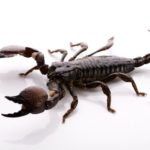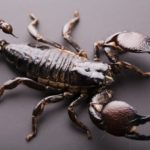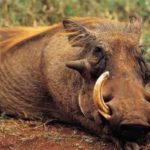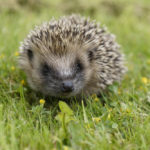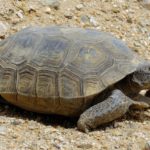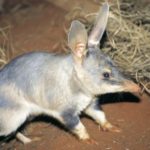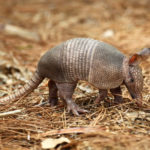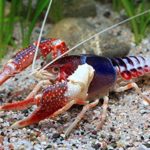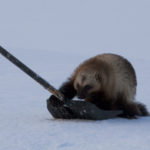Scorpions
 All scorpions are nocturnal animals, in the afternoon they hide under rocks, leaves, in rotten stumps in the forest. In the deserts, burrows often dig themselves. A motley scorpion, leaning on its claws, pedipalps, digs with its feet and throws sand with its “tail” – more precisely, with a backbone, a metasoma. Dug mink is up to 10-15 cm long. African maurus (Scorpio maurus) digs thick claws of shelter up to 75 cm long.
All scorpions are nocturnal animals, in the afternoon they hide under rocks, leaves, in rotten stumps in the forest. In the deserts, burrows often dig themselves. A motley scorpion, leaning on its claws, pedipalps, digs with its feet and throws sand with its “tail” – more precisely, with a backbone, a metasoma. Dug mink is up to 10-15 cm long. African maurus (Scorpio maurus) digs thick claws of shelter up to 75 cm long.
At night, scorpions go out to hunt – they slowly crawl, revealing their claws. They are guided mainly by touch: the finest hairs of trichobotria on pedicell pincers are associated with nerve cells and react sensitively to all contact, air and ground shaking. In addition, on the underside of the body, scorpions have special comb organs, they also detect fluctuations in the soil, air, including sound waves, and also chemoreceptors – they catch smells. Scorpio feels another creature at a distance of 20-50 cm. It can attack a small thing, it runs away from something large, waving its “tail” in all directions, with a blubber on its end, with a poisonous gland on its end – telson and a sharp hook – sting. Only so, in a panic, if he is frightened or accidentally crushed, a scorpion can sting a person – especially to attack him, of course, there is no need.
Hunting scorpion is also passive. If he comes across a prey – a spider, a filly, a worm, a beetroot, a centipede, a cockroach, – he tries to grab it with claws, but if he misses one or two times, he does not pursue. If the catch is caught, the scorpion stings it with a sting until it stops. Then he begins to eat – immediately or be carried in claws to his shelter.
Hard food scorpions can not swallow – they have a very narrow oral opening. Claws and jaws – chelicera – scorpion flutters prey, destroying the covers, and then releases a special secret with enzymes on it, which splits the proteins. The resulting broth is then absorbed, and the hard lumps are retained by the bristles at the mouth and discarded.
The segments of the abdomen of the scorpion can be strongly stretched and can contain a lot of food. The animal can slowly eat and digest the big prey even a week. Some more scorpions can sometimes join such a meal, although they are individualists and avoid each other, and, on occasion, do not disdain cannibalism.
Usually scorpions eat only live prey, unless they are very hungry, they will take a fresh dead. In poor conditions they can fast for a long time – up to a year, according to observations of Zh.A. Fabra, and even longer. Usually scorpions refuse food for 6-7 months – this is another feature of their fitness for living in the desert. True, this is not a record. The beetle bladder (Blaps reguini) from Tunisia starved in the laboratory for 6 years.
In the heat, if possible, some scorpions suck a drop of water, wet sand, and large pandinas even come to lie in shallow water, although they can not swim and drown at depth, as water clogs the respiratory pores. But usually scorpions are content with the moisture obtained with food.
Most of the time, when they are not very hungry, scorpions spend in or near shelters. During the day, small animals eagerly wander into their homes in search of shelter, so do not go far beyond dinner from under the stone. Threatening, the scorpion raises the “tail” and so can stand very long.
These creatures have up to 12 small eyes – different in different species. But he sees the scorpion is bad, except that it distinguishes light from the shadow – and leaves the light. The scorpions do not react to red light at all.
Some Indian and African scorpions can irritate with chirrups of legs and abdomen.
The weddings of these arachnids are very original. The male in the “love season” wanders in search of a female, and when she finds it tries to take her by claws. Ready for matrimony female stretches closed claws to the boyfriend, after which he starts to drive her back and forth, looking for a convenient place to put off the spermatophora – bag of sperm.
